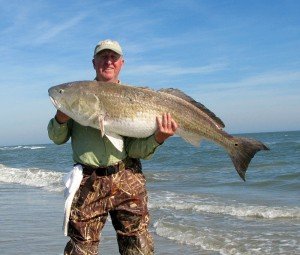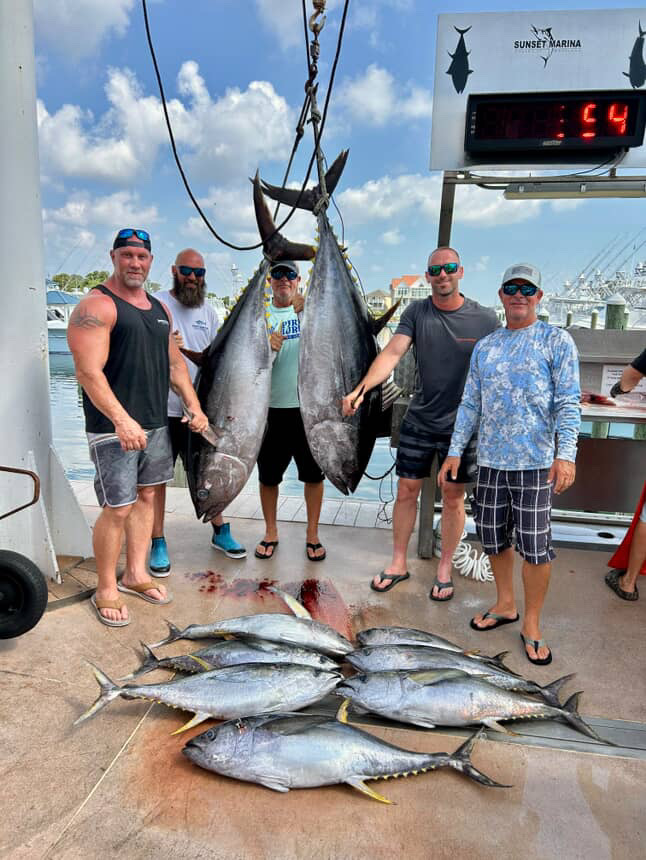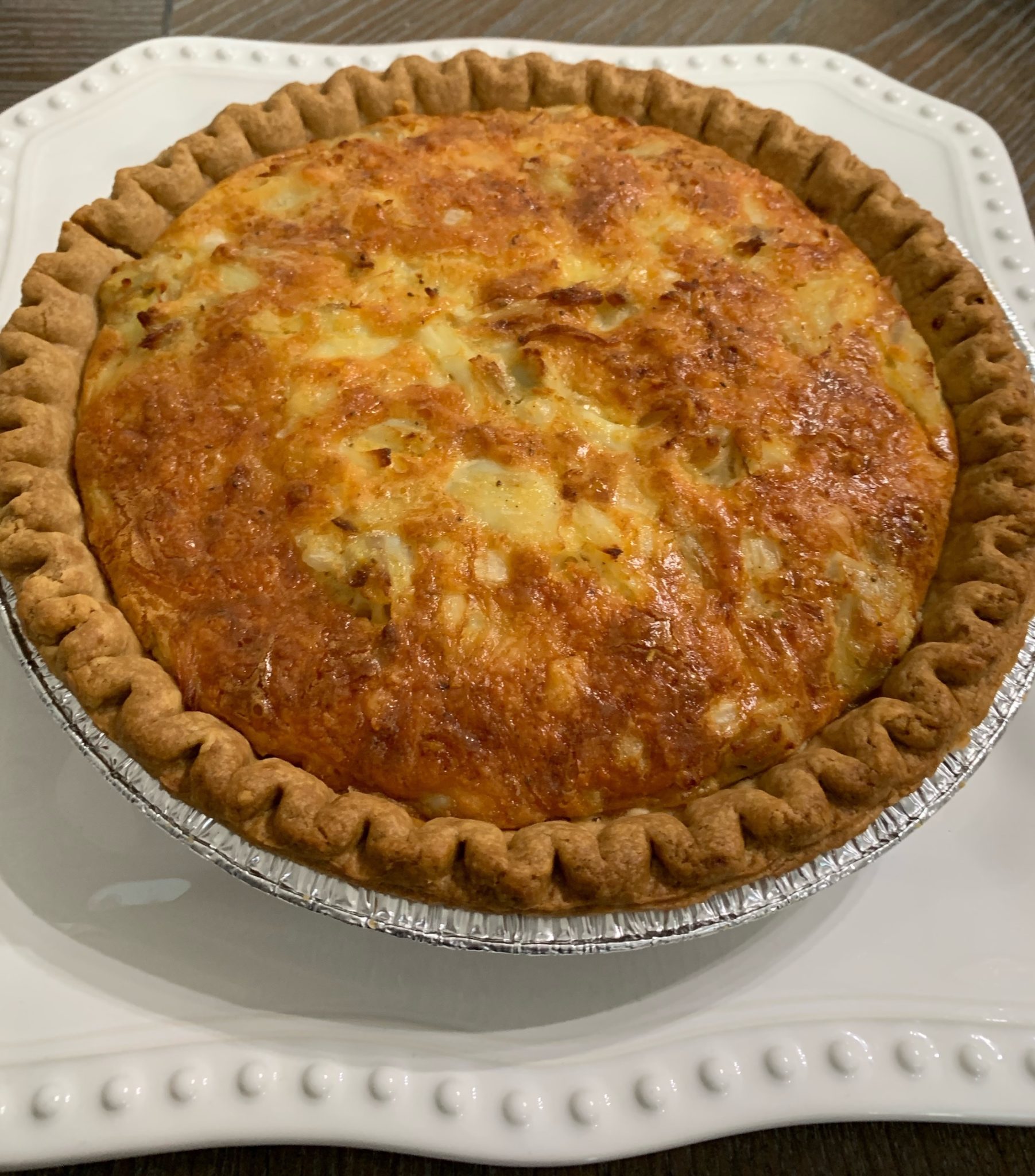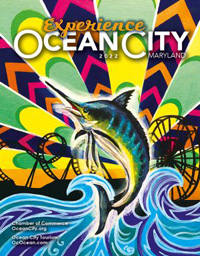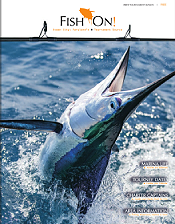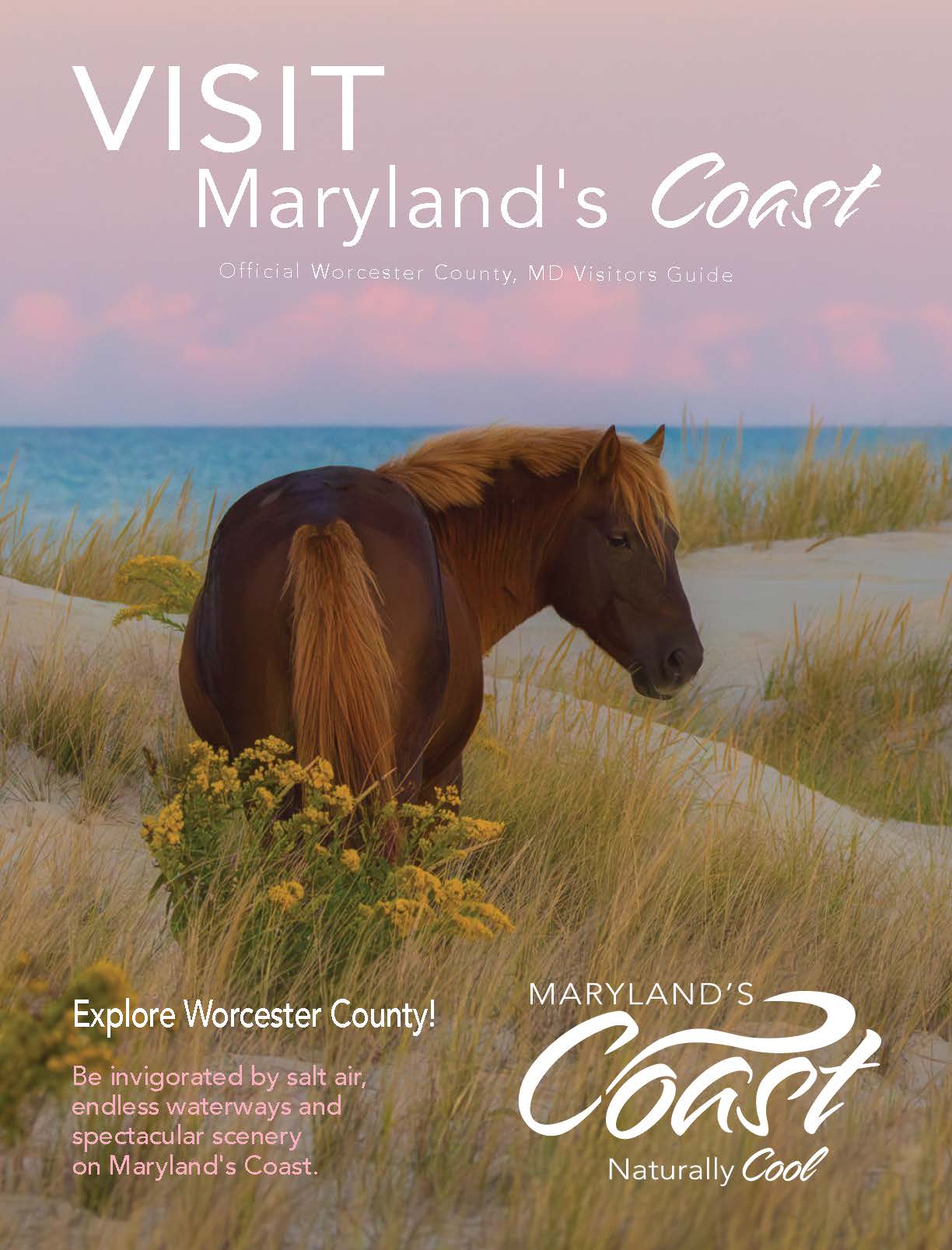OC’s Fishing Heritage
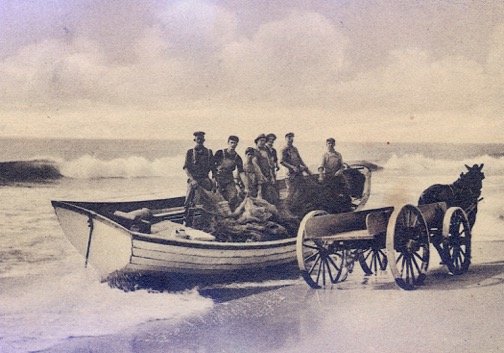
Early Ocean City Pound Net Fishermen
By Dale Timmons
To picture Ocean City right after the Revolutionary War and even into the early 1800s, all you have to do is visualize Assateague Island without the Verrazano Bridge or the state and federal buildings that are currently there. Barrier islands were wild and desolate places in those days, and there was basically nothing or no one there. The few people who lived in the area lived on the west side of the bay. They were mostly farmers, eking out a living on small, pretty much self-sufficient plots of land carved out of dense pine forests. To them, the barrier islands were protection from storm tides and providers of ducks and geese, marsh hens, crabs, clams, oysters, turtles, small game and, of course, fish. Even the “beach birds” and their eggs were fair game in those days, when people were hungry and there were no grocery stores. You didn’t go “over on the beach” to get a suntan, but to find or catch something to eat or salt away for the winter.
Most folks in those days were able to fend for themselves, but of course there were some who were more proficient than others at catching fish, clams, crabs or oysters, and I suppose the first “commercial fishermen” were those folks who would sell or trade their excess to their neighbors. To say that Ocean City got its start as a small fishing village, however, is to oversimplify, for sure. In fact, if you read up on the resort’s history, waterfowl hunting, both commercially and “for sport,” probably had more to do with the creation of the town than did fishing. Rich folks from big cities like New York and Philadelphia came to the area to hunt, and a few enterprising locals built the first “lodges” to give them a place to stay while they hunted. I guess you could say they were the first “tourists”. Some of these rich gentlemen bought vast tracts of land to hunt on, both on the barrier island and the mainland. To simplify somewhat myself, their interests and land ownership in the area eventually led to the railroad coming to the small village that was beginning to form.
Commercial fishing was really able to grow after the railroad came and fish could be shipped to larger cities. Most of it was in the form of “pound” fishing. “Pounds” are basically large fish traps consisting of a “lead” and a “trap”. The lead is a line of poles with netting stretched in between. On the seaward end of the line of poles more poles form a square or rectangle with netting that creates a pocket. As the fish travel along the beach, they come to the lead and follow it until they go into the pocket and are trapped. The fish stay alive until the fishermen go to the trap and scoop them out of the pocket. Pound net fishing in the ocean meant launching fairly large dory style boats into the surf and rowing through the waves to reach the traps. It was hard and dangerous work. A friend of mine, Capt. Mac Simpson, lost his father when he was killed while “blowing” pound net poles. If a pound was taken out of service, government regulations required the fishermen to blow up the poles below a certain depth so they wouldn’t be a hazard to navigation. One of the blown poles struck Mr. Simpson in the head, killing him.
My great grandfather Thomas Cropper and his brothers were involved in the Ocean City pound net fishery with the “Cropper Brothers Fish Camp.” Unfortunately, it was located just about where the Ocean City Inlet now flows, and it was wiped out by the great August hurricane of 1933 that created that inlet.
The creation of the inlet was a “natural disaster” that allowed Ocean City to become a fishing “destination,” and it spurred a whole new industry in the form of offshore and nearshore charter fishing. Inlets were cut in the barrier islands all the time in those days, and most of them filled back in naturally. Since Ocean City was already beginning to grow as a tourist destination and had its own infrastructure, however, the politicians decided to have the Corps of Engineers stabilize the inlet with jetties and keep it open. That decision made Ocean City what it is today and at the same time allowed the preservation of the land south of the inlet, namely Assateague Island, in the 1960s.
Soon after the inlet was cut, a few boat captains dared to go through it into the ocean. Even in the mid 1930s, people still fished either for food or to make a living, not for “sport,” so it was the commercial anglers who led the way, many of them in relatively small single engine skiffs equipped with nothing but a compass. People like Capt. Turner Cropper, who I was fortunate enough to know when he was in his 80s and I was a young teenager, explored the near shoals and sloughs. They trolled hand lines baited with lures such as spoons (“tin squids”) or “Jap feathers” and caught bluefish or Atlantic bonito to sell. These captains found places such as the famous Jackspot, and no doubt they observed white marlin feeding on bait. They took their stories back to the dock, and it wasn’t long before other captains such as Crawford Savage went looking just for the billfish. As early as 1936, Ocean City Marlin Club records show 175 white marlin caught. Word spread, and anglers such as the famous Townsend brothers started coming to Ocean City just to fish. By today’s standards, boats and equipment were crude, with no electronics, outriggers, fighting chairs or VHF radios, but by 1939 there were 1,259 white marlin recorded for the season. Oddly enough, the last fish noted that year was on August 26, which nowadays is just getting into “prime time” for white marlin. Many of these fish were caught at the Jackspot, an underwater hill named for angler Jack Townsend, but for my money it could have just as easily been called “Turner’s Lump.”
During World War II, the lack of fuel and the presence of German U-Boats along the beaches virtually shut down offshore fishing. Things built slowly after the war, and it was the late 1950s and 1960s before Ocean City white marlin fishing really came into its own. Boats were still crude and very slow by today’s standards, and electronics were just starting, but there was a substantial and growing charter fleet. My father was a mate, then a captain on some of these charter boats, and some of my favorite childhood memories involve meeting the boat every afternoon and scrubbing her from stem to stern. These were boats with names like “Janet L”, “Belinda,” “Cecil,” “Cecil B”, “Sport,” and “Mar-A-Mor,” to name a few. Even though I was just a youngster, I was fortunate to have known many of the captains who ran these boats, people like Paul and Johnny Mumford, Hick Simpson, Jerry Simpson, Mac Simpson, Fred Kerstetter, Sr., George Eddy, Harry Kellum, Chuck and Albert Willis, Tuffy Bunting, Hoss Hadder, Reese Layton, Dale Brown and Bill Burbage. Even former Ocean City mayor Roland “Fish” Powell was a charter boat captain for a time. With no radar, fish finders, or satellite imagery, these men relied on their knowledge of fish habits, water color and clarity, currents and other factors that could only be learned through experience to help them catch fish. There were no “dredges” in those days, or even decent teasers until Capt. Paul Mumford developed his Trophy Tackle Teaser with its poured resin head that was also among the first to feature nylon “hair” called Saran. In 1967 this small local fleet recorded 1,146 white marlin caught, followed by 1,735 in 1968, 2,507 in 1969, 2098 in 1970 and 2,206 in 1971. This era and these numbers earned Ocean City the title “White Marlin Capital of the World.”
Most of the marlin during this time were caught on carefully sewn squid baits, usually locally caught squid. Ballyhoo were rare. And leaders were usually wire. I can remember my father showing me how to “sew” a squid on the hook so it would swim naturally behind the boat, and how to make a perfect haywire twist. I was never very good at either of these techniques, however.
Not everything was about the white marlin, however. Hordes of big bluefish fed on clouds of sand eels on the inshore shoals in spring and early summer, and most of the charter boats made their living with bluefish trips until July rolled around. Oddly enough in today’s time of “tuna mania”, most captains rarely targeted tuna in those days. Some marlin fishermen even went out of their way to avoid tuna since they tore up baits and tackle and took too long to catch. Times have definitely changed.
Ocean City’s party boat scene grew during this same period. Boats like the “Question Mark” (an old converted WWII PT boat), the “Northern”, the “Taurus” and the “Capt. Bunting” carried fishermen to inshore shoals and wrecks for slab porgies and big sea bass. In the fall, the shoals were covered with “trout” (weakfish) and big croakers, also known as “hardheads.”
Not every angler went outside the inlet for their target species, however. In the 1930s, 40s and 50s, Ocean City and nearby Assateague Island was known for excellent surf fishing for the prized red drum, and locals such as former OC Mayor Hugh Cropper, Orlando Davis from Showell, Berlin’s Shel Chandler, and Tom Taylor, also of Berlin, plus many others, chased the big reds in early summer and then again in the fall. Early rods were split bamboo, and reels often had no drags, only a leather “thumb protector.” Mr. Taylor, by the way, invented and patented the now well known “Hurricane” or “Storm” sinker used to hold bottom in the strong surf. Surf fishermen also caught other species, including croakers, stripers, bluefish and kingfish, or whiting. One of my favorite memories was my first trip to Assateague on the ferry that left from South Point. The gentleman who took me and I caught over 60 kingfish that day. As a 12-year-old with his first surf rod, I was in heaven.
During the 1950s, Ocean City also became a well-known spot for summer flounder fishing. The then relatively new Rt. 50 bridge was a hotspot for land bound flounder fishermen, not to mention a nighttime hotspot for big weakfish. Anglers like “Baltimore” George Richter, “Scotty” Prahm, and Bob Dowell made the structure even more famous in the late 1970s and early 1980s.
Yes, Ocean City has a rich and diverse fishing heritage, and those traditions continue to this day with large, modern marinas and some of the largest fishing tournaments in the world, including the White Marlin Open, the Ocean City Tuna Tournament and the Poor Girls Open, to name just a few. The old boats are mostly gone, and new 60 to 70 footers that cruise up to 40 knots and easily run 100 miles offshore have taken their place. Electronics are amazing, and a new breed of equally talented young and not-so-young captains and mates are recording their own impressive catches.
Technology and techniques may have changed and evolved, but the desire to get on the water and feel the wind and hopefully pull on some mysterious creature that pulls back will always be a part of the big little town “over on the beach”….

